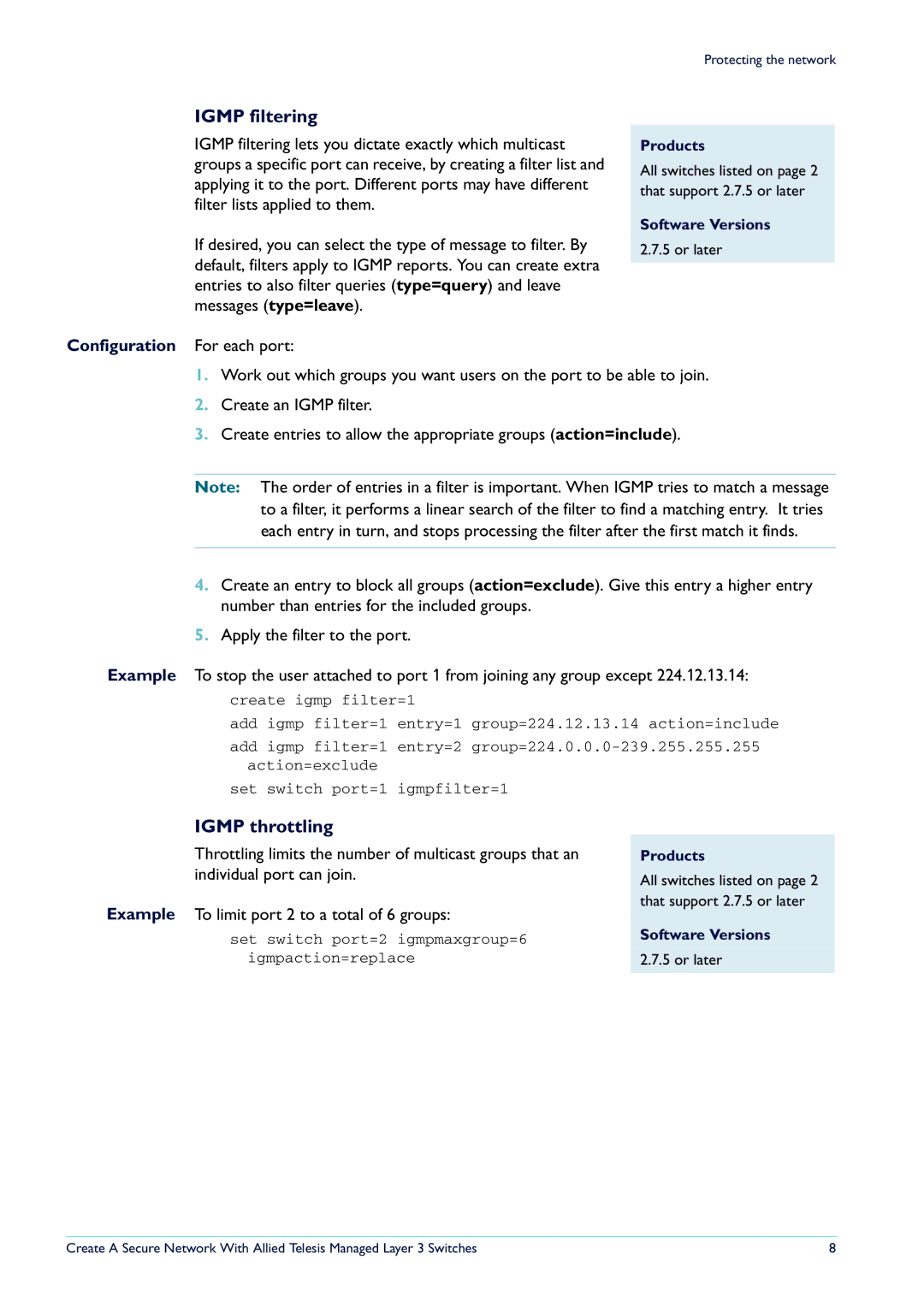
Protecting the network
IGMP filtering
IGMP filtering lets you dictate exactly which multicast groups a specific port can receive, by creating a filter list and applying it to the port. Different ports may have different filter lists applied to them.
If desired, you can select the type of message to filter. By default, filters apply to IGMP reports. You can create extra entries to also filter queries (type=query) and leave messages (type=leave).
Configuration For each port:
Products
All switches listed on page 2 that support 2.7.5 or later
Software Versions
2.7.5 or later
1.Work out which groups you want users on the port to be able to join.
2.Create an IGMP filter.
3.Create entries to allow the appropriate groups (action=include).
Note: The order of entries in a filter is important. When IGMP tries to match a message to a filter, it performs a linear search of the filter to find a matching entry. It tries each entry in turn, and stops processing the filter after the first match it finds.
4.Create an entry to block all groups (action=exclude). Give this entry a higher entry number than entries for the included groups.
5.Apply the filter to the port.
Example To stop the user attached to port 1 from joining any group except 224.12.13.14:
create igmp filter=1
add igmp filter=1 entry=1 group=224.12.13.14 action=include
add igmp filter=1 entry=2
set switch port=1 igmpfilter=1
IGMP throttling
Throttling limits the number of multicast groups that an individual port can join.
Example To limit port 2 to a total of 6 groups:
set switch port=2 igmpmaxgroup=6 igmpaction=replace
Products
All switches listed on page 2 that support 2.7.5 or later
Software Versions
2.7.5 or later
Create A Secure Network With Allied Telesis Managed Layer 3 Switches | 8 |
